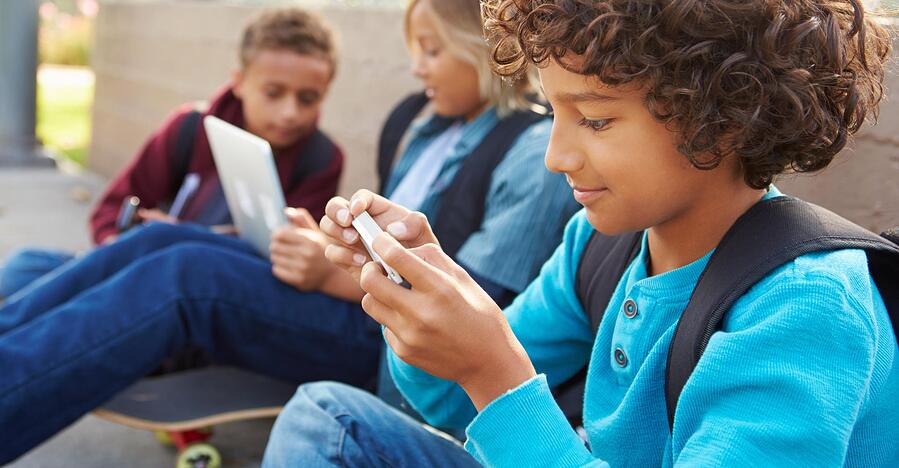
For parents having issues with your kids facing addictive or inappropriate content on YouTube, we have some advice for you
I love YouTube. Whenever I need to learn how to fix something or want to learn to make something new in the kitchen, I turn to its endless videos. As a parent of young kids, I was resigned to the eventuality of YouTube in my children’s lives. When my child started watching sports and nature videos, it all seemed pretty innocuous. Then, during the first lockdown of the Covid-19 pandemic in March, my kids discovered Minecraft gaming videos -- and their use patterns changed in an instant. Soon, they were glued to YouTube for hours at a time. I was okay with it. I was trying to keep my head above water at work with three kids at home. And when they were on YouTube, they weren’t fighting. But, soon, they couldn’t stop. When I would suggest other activities, they became angry and lashed out. They bugged me endlessly about getting back on YouTube. I tried setting limits, but my will was no match for the lure of YouTube. So to end the pain, I blocked it. After a couple of days, the kids forgot about the gaming videos. We still had some issues around device dependence, but for the most part they were ready to put the screens down when it was time. Fast forward to September. Our children “returned to school,” from home. The school district was able to provide each student with a school issued iPad or Chromebook. We took them home and a few days into distance learning, things seemed to be going pretty well. My second and fourth graders were adjusting and they seemed to be able to handle all the time online. So imagine my surprise when I came behind them one afternoon in the first week of school and there on the screen is my arch internet nemesis, “Unspeakable Gaming.” And when I dug a little further, I found this: And this. ...on my seven-year-old’s school-issued Chromebook. My first reaction was shock. I was surprised the school district hadn’t locked YouTube down, so I went to try to restrict it myself. But after playing around with the school- issued device for a few minutes, I realized I couldn’t even adjust the settings much let alone set content controls. More than 8 million kids are going back to school this season on Chromebooks, the most popular device for cash-strapped school districts. And while most school districts are exerting some level of control over those devices, there’s no standard everyone is following. In some instances, that control is shared between the district and the parents. In others, the matter is a bit more complicated. Regardless of your situation, here are some things you can do to take control over new devices in your home. If your children received a school-issued device, you may have a lot of control or a little. Here’s how to find out which it is. First, are the native controls in the operating system -- like iOS Screen Time -- available to you? Depending on your device’s operating system, you may be able to take a lot of control over content and apps right there. If the device settings aren’t sufficient, see if you’re able to install your own parental control software on the machine. There are a lot of solutions out there that offer differing levels of control, depending on what kind of device it is. Look for software from a reputable vendor, and be on the lookout for stalkerware apps that market themselves as parental controls. Don’t seek to hide the parental control app from your children, but rather talk about the parameters you are setting for them and why. If you can’t control the device, don’t despair! You still have options, the best of which is setting parental controls on your home network. In order to do that, you need to make some changes to your router, which is where the internet comes into your home and is turned into a Wi-Fi signal. Like the door to your home network, the router is another point where you can set boundaries for what a phone or tablet can do on the internet. You can use a hardware solution that plugs into your router (we humbly suggest Avast Omni) to monitor your network, alert you about any connected devices, and allow you to place limits on what those devices can do on your network. In some instances, the controls are quite granular, allowing you to block specific sites and services and turn them on and off at certain times of day. If the two options above don’t work, then it’s time to figure out how to work with your school or district IT team to come up with a solution together. In his book 1-to-1 at Home: A Parent’s Guide to School-Issued Laptops and Tablets, psychotherapist Jason Brand suggests that in a learning environment where your child has a dedicated device, the school and parents need to have a shared control structure. Parents may want to control access and content to the device outside of school hours. Depending on the solution your school or district has adopted, there may also be apps, services, or network restrictions they can put in place on their end to help you control.
AND this.How to take control of a school issued device
How to take control if you don’t have access
如有侵权请联系:admin#unsafe.sh
